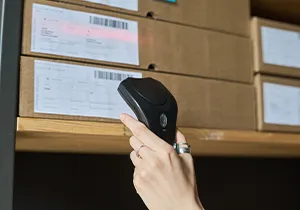In the bustling world of warehousing and logistics, the smallest details can make the biggest differences. One of these crucial details is labeling. Whether you’re a retailer shipping thousands of items daily or a startup sending out its first batch of products, understanding the intricacies of the labeling process is essential. Let us guide you through the world of UPCs, ASINs, EANs, SKUs, and more, ensuring your products not only reach their destination but also communicate vital information along the way.
The ABCs of Labeling: Why It Matters
When you think about it, labeling is the language of logistics. Just as we rely on words to convey ideas, warehouses depend on labels to instruct, inform, and guide. A misplaced or incorrect label can lead to shipping errors, lost goods, and unhappy customers. On the flip side, accurate labeling boosts efficiency, enhances traceability, and solidifies customer trust.
Digging into the Different Label Types
Let’s break down some of the most common label types and their unique purposes:
UPCs (Universal Product Codes): Predominantly used in retail stores across North America, UPCs are 12-digit numbers read by scanners at checkouts. They’re pivotal for inventory management and pricing.
ASIN (Amazon Standard Identification Number): If you’re selling on Amazon, you’ve likely encountered ASINs. Each product listed on Amazon gets its unique ASIN, ensuring it’s distinguishable in their vast marketplace.
EAN (European Article Number): Similar to the UPC but used globally, the EAN is a 13-digit number that identifies a product for retail sale.
SKUs (Stock Keeping Units): Custom codes created by companies, SKUs are instrumental for tracking inventory internally. They can differ from vendor to vendor, making them versatile tools for businesses.
Proper Placement and Quality Matter
Labels are not just about the type; it’s also about where and how they’re placed. For example, inner carton labeling can help warehouse workers identify items without opening the box, speeding up the picking process. Pallet labeling, meanwhile, ensures that large shipments are correctly identified and handled.
It’s also vital to ensure the labels are of high quality. Faded or low-resolution labels can mislead scanners, resulting in costly mistakes. A best practice is to opt for high-quality print and materials resistant to wear, tear, and environmental factors.
Labeling Beyond Identification: Conveying Special Instructions
Beyond simple identification, labels can convey special instructions. Whether it’s “fragile,” “this side up,” or “keep refrigerated,” these cues guide handlers and ensure products receive the care they deserve. Custom labeling, like “ready to ship” or “do not separate,” also helps maintain order in bustling warehouses, ensuring products move smoothly from shelf to shipment.
Stay Ahead with Technology
In our digitized world, integrating tech into the labeling process can work wonders. Modern warehouse management systems (WMS) often come with advanced labeling solutions, allowing for easy customization, batch printing, and real-time updates. Leveraging such technologies ensures you’re not just labeling but smart labeling.
In Conclusion: Labeling as a Pillar of Excellence
Labeling might seem mundane to an outsider, but in the logistics world, it’s a linchpin of success. By mastering the art and science of labeling, businesses can ensure smoother operations, reduced errors, and, ultimately, heightened customer satisfaction.
For businesses looking to further optimize their warehousing and labeling processes, we’re here to help. Our expertise extends beyond just labeling to encompass a comprehensive range of warehousing solutions. Contact us today to find out how we can make your operations more efficient, streamlined, and effective.

